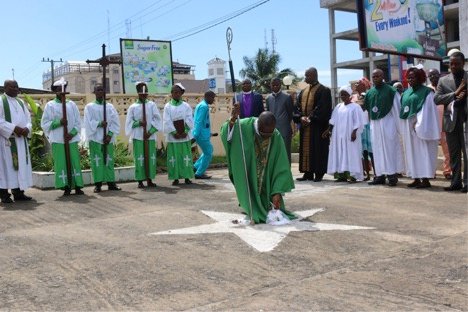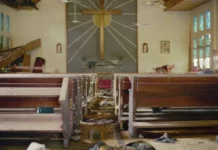The Centre For Justice and Accountability (CJA) has filed on behalf of four victims asking court to find Moses Thomas, a colonel in the AFL and commander of its Special Anti-Terrorist Unit “liable for extrajudicial killings, attempted extrajudicial killings, torture and cruel, inhuman or degrading treatment, war crimes and crimes against humanity.”
The motion, filed in the U.S. District Court for the Eastern District of Pennsylvania says “because there is no issue of material fact in dispute,” plaintiffs ask for the court to grant their motion. Victims ask for $US4m in “compensatory and punitive damages.”
A U.S. federal court in Philadelphia could pass judgement in the absence of Thomas, who fled to Liberia in 2020.
The St. Peter’s Lutheran Church Massacre is the single worst atrocity in the Liberian Civil War (1989-2003), with 600 people—predominantly Gios and Manos—killed on July 29th, 1990.
If he is found responsible Thomas will be the first person held liable for the massacre more than 30 years since it happened.
Four Liberian survivors and children of victims of the St. Peter’s Lutheran Church Massacre, who filed a lawsuit against former Armed Forces of Liberia (AFL) colonel, Moses Thomas, in 2018, have asked a federal judge in the United States to find Mr Thomas responsible for the massacre and numerous crimes against humanity.
Lawyers for the victims filed 2000 pages of evidence with the court Tuesday saying, “because there is no issue of material fact in dispute” the court should grant their motion to find Thomas liable for the crimes and award them $US4m in “compensatory and punitive damages.”
“We believe that today’s court filing presents conclusive evidence that Thomas was responsible for the Lutheran Church Massacre and we are asking the court to hold Thomas liable for extrajudicial killing, torture, war crimes, and crimes against humanity,” said Elizabeth Nielson of Debevoise & Plimpton, which alongside the Center for Justice and Accountability (CJA) represents the plaintiffs in the case in the statement on Tuesday.
The lawyers brought the suit on behalf of the Liberia-based victims in part because they were unable to obtain justice in Liberia. Today the lawyers urged the government of Liberia to act.

“Liberia has yet to see meaningful accountability for the atrocities committed during its civil wars, despite demands from Liberian civil society and recommendations by the United Nations,” said Ela Matthews, a lawyer at CJA. “The catalog of evidence filed today not only proves our clients’ claims against Thomas, but shows why Liberia must finally take action to end impunity.”
CJA’s filing for a summary judgement comes a year after Mr Thomas fled the United States and returned to Liberia.
He had not responded to his February 12, 2018 indictment as well as two requests from the court for him to do so. The court had also denied his motion to dismiss the case on grounds that the alleged offences had taken place a long time ago.
The case was brought under the U.S. Torture Protection Act and the Alien Tort Statute which allow victims to bring civil actions against alleged perpetrators for acts committed outside the United States.
The plaintiffs accused Thomas, a former commander of the Krahn-dominated Special Anti-Terrorist Unit (SATU) of the Armed Forces of Liberia (AFL) of masterminding the killing of some 600 civilians, predominantly of the Gio and Mano ethnic groups, over a brutal 8-hour period.
Victims’ statements contain harrowing stories. One victim was clear that the attack was directed at ethnic groups believed to support the growing rebellion of Charles Taylor in the northern county of Nimba.
“The soldiers said not one Nimba man will leave. Before the arrival of Taylor, there will be no Gio men. I heard people begging for their lives and saw soldiers searching everywhere for survivors and killing people, including a man wearing a Red Cross vest, with cutlass, axes and guns”.
Another victim, named John Y, a child at the time, described hiding in the church’s pulpit with a little boy. He explained, “I whispered my little brother’s name at this boy, even though I knew that my little brother was in the school building with my mother. I just wanted to have my family alive with me, and the thought that my brother was next to me kept me believing that I could survive.”










